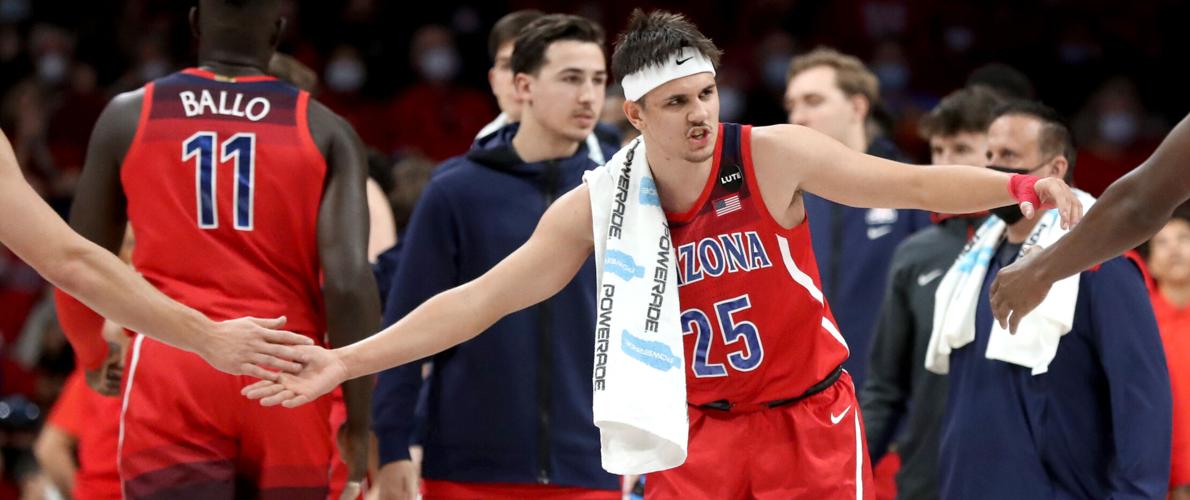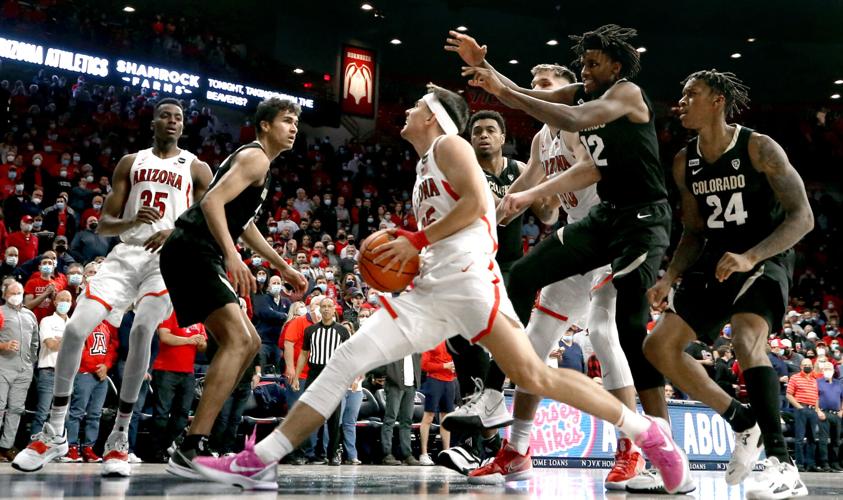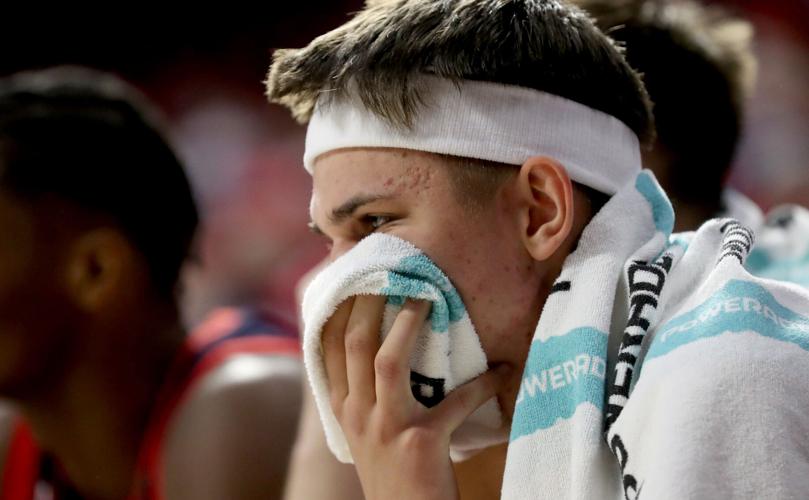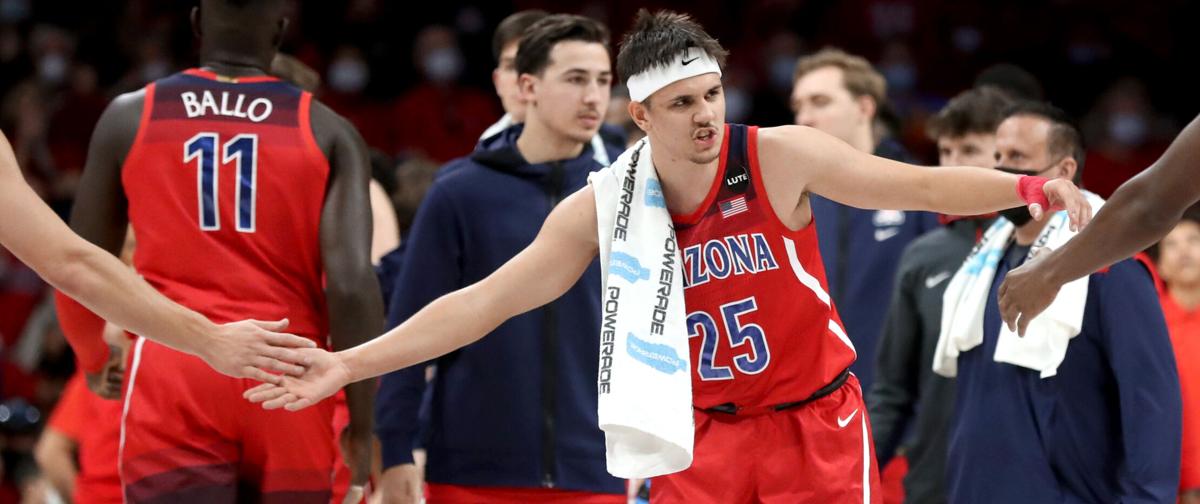Despite a nagging thumb sprain, things are going pretty well these days for Kerr Kriisa, his native Estonia and the Arizona Wildcats.
Some pain. Some frustration. But also a lot of victories.
Either way, he’ll be sure to tell you exactly what he thinks about it.
As he does on the court as Arizona’s ever-expressive point guard, Kriisa communicated in a characteristically open and sometimes blunt manner Wednesday during his first local interview since Jan. 3.
Even when it came to the painful stuff. Like his left thumb.
“It hurts,” Kriisa said. “I don’t know if it affects (my play) but it hurts when I play. It hurts when I eat. It hurts.”
Kriisa said he didn’t know when his thumb was first injured, in a game “a long time ago,” but that his improvement has been constantly pushed back every time it gets banged up in a game.
“Basically when you get a hit, it goes back to the beginning,” Kriisa said.
All those repeated blows may or may not be a coincidence.
They might even be a part of opponents’ scouting reports. You know, like maybe opposing players might want to “test” how Kriisa’s thumb is feeling that day. (It was 11 years ago that Arizona tried to keep star forward Derrick Williams’ broken pinky a secret for fear that opponents would target it.)
“If I was a coach, I would tell the players to do that,” Kriisa said.

Arizona guard Kerr Kriisa finds a seam to the bucket during the Wildcats’ Jan. 13 win over Colorado in McKale Center.
While Kriisa says he doesn’t know if the injury is affecting his play, statistics suggest it could be. Since UA lost at UCLA on Jan. 25, Kriisa is shooting just 24.6% from the field (26.5% from 3) and has an assist-to-turnover ratio of just 1.31, numbers that are much lower than his season average.
But both Kriisa and UA coach Tommy Lloyd also aren’t about to make a big deal over it. Lloyd noted that the injury is to Kriisa’s non-shooting hand, saying “When I was shooting the ball, the left wrist was never really involved — so I think he’s fine.”
Kriisa said any effect is probably just “mental” at this point,.
“Nothing crazy,” he said. “I’ll be fine.”
It’s just that everything Kriisa has gone through lately is under a brighter spotlight … because he’s the point guard for a third-ranked 22-2 team that is now a projected No. 1 NCAA Tournament seed.
Kriisa said he doesn’t feel any more pressure as a result but found motivation in the preseason, when UA was not ranked at all.
“Five, six months ago when we started with our preseason stuff, nobody really believed in us,” Kriisa said. “So I wouldn’t put any extra pressure on us because now we’re doing pretty good. There was a lot of haters. I don’t know. Now they’re fans, I guess. So it’s welcome to the fan club. But I wouldn’t put extra pressure on me. No.”
The spotlight even extends all the way home to Estonia, where Kriisa says some of Arizona’s games are now being carried on local television.
“That’s kind of big thing for me,” Kriisa said. “That shows how Estonians are really into what we’re doing here and how special it is here.”

Kerr Kriisa has endured a thumb issue in Pac-12 Conference play.
In return, Kriisa is into what his country’s fellow athletes are doing. Noting that Estonia is a small country with a population roughly the same as Tucson’s — Estonia has 1.3 million people; Pima County has about 1 million — Kriisa said he knows several of the country’s top athletes and cheers for them.
Right now, that means he’s watching skiing.
On Tuesday, Kelly Sildaru picked up Estonia’s first medal of the Beijing Olympics for her performance in women’s freestyle skiing. It was the first medal ever in freestyle skiing for anyone from Estonia, which is a primarily flat country.
“I’m looking at how my Estonians are doing,” Kriisa said. “We just got a bronze medal so basically our Olympics have succeeded right now.”
One bronze medal can be a success.
That’s the perspective Kriisa brings from Estonia.
“If everything went only upwards, I’d probably be in (the) NBA right now,” he said. “If I make every shot, I would be in (the) NBA. It’s basketball. Who is most consistent is the obviously the best player on the court. It’s not that I’m not trying to be consistent, but … it’s hard to always be consistent.
“You have better games, you have worse games. You learn from both of these games. Either it’s bad or good.”







